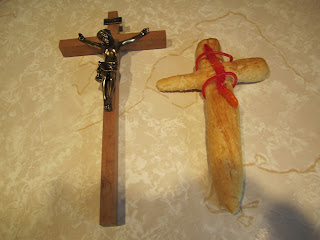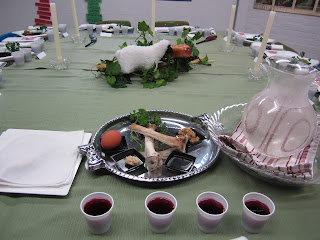Here is the recipe, Enjoy!
Empty Tomb Cookies
Ingredients
1 cup whole pecans, in a plastic baggie
1 teaspoon vinegar
3 egg whites
1 pinch salt
1 cup sugar
Directions
Preheat oven to 500 degrees--you MUST do it now. Also, gather a cooking mallet, kitchen mixer, masking tape and Bible.
Read John 19:1-3 ~ Jesus was beaten for our sins; beat the nuts with a cooking mallet; set aside.
Read John 19:28-30 - Jesus drank something like vinegar (gall), sniff the fragrance, dip finger in and taste, too; place the vinegar in a mixing bowl.
Read John 10:10-11 - Egg whites symbolize Jesus' holy, innocent life; add whites to the bowl with the vinegar.
Read Luke 23:27 - the bitter tears of the women; taste a few grains, remember your own sins; add the salt to the bowl.
Read Psalm 34:8 and John 3:16 - Sweet salvation! Taste and see; add to the bowl.
Crank up the mixer and let it go while you read from Isaiah 1:18 and John 3:1-3; let the mixer go for about 12-15 MINUTES; this needs to be VERY stiff!
Read Matthew 27:57-60 - Fold the nuts into the egg-sugar mixture; this symbolizes the rocks in the garden. Using a scoop or knife & spoon, drop by spoon into mounds (to resemble a rocky tomb); put into the oven and turn it OFF!
Read Matthew 27:65-66 - The tomb is sealed; use two pieces of tape (5-6 inches long) to "seal" the door edges (symbolically).
Read John 16:20 & 22 - Consider these passages, then go to bed!
NEXT MORNING: Read Matthew 28:1-9 - Jesus is risen! Behold--the empty tomb! Unseal the oven door, take out the cookies, break or bite one in half -- it should be hollow inside---empty---just like the Tomb!
He is risen! He is risen indeed! Hallelujah!




